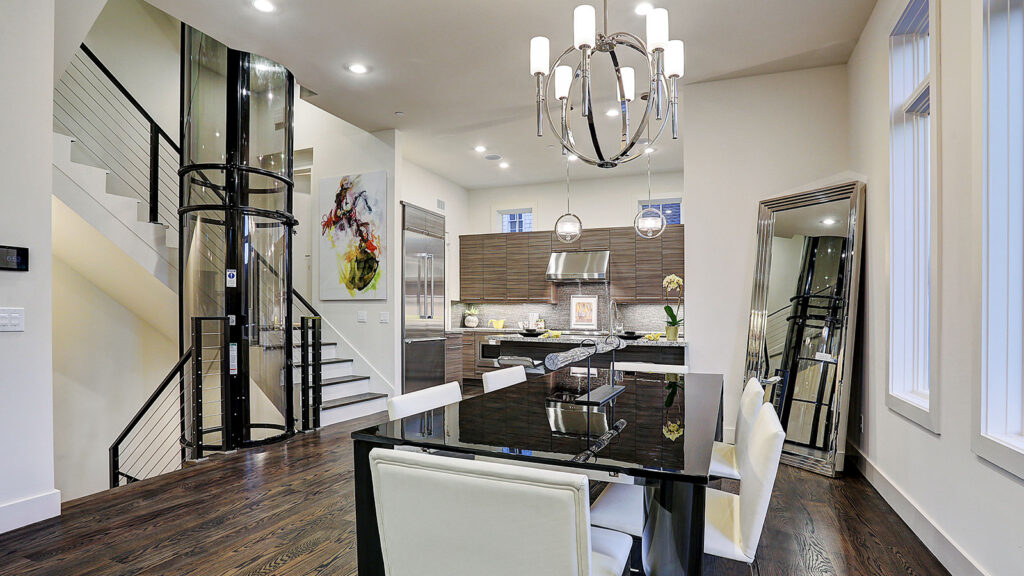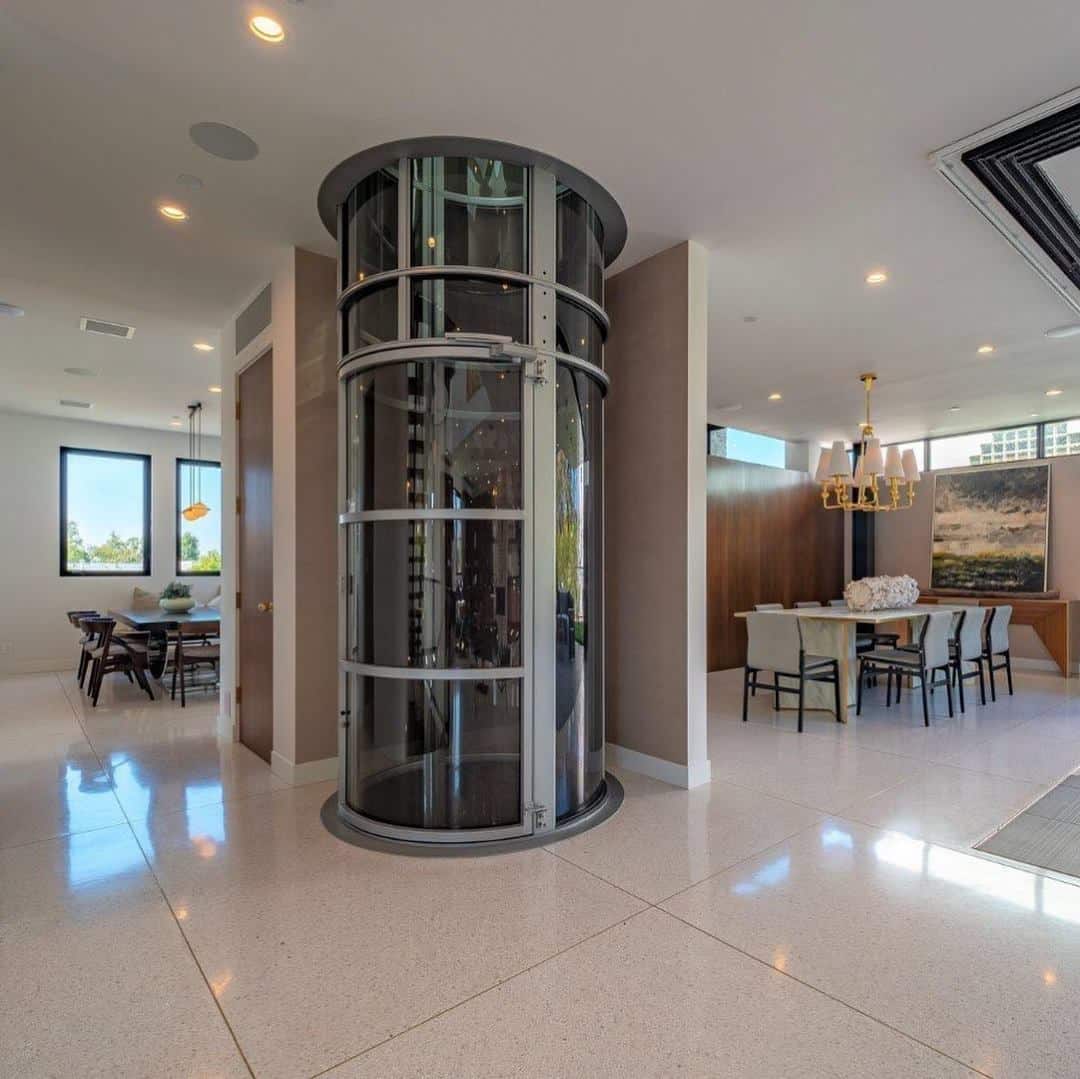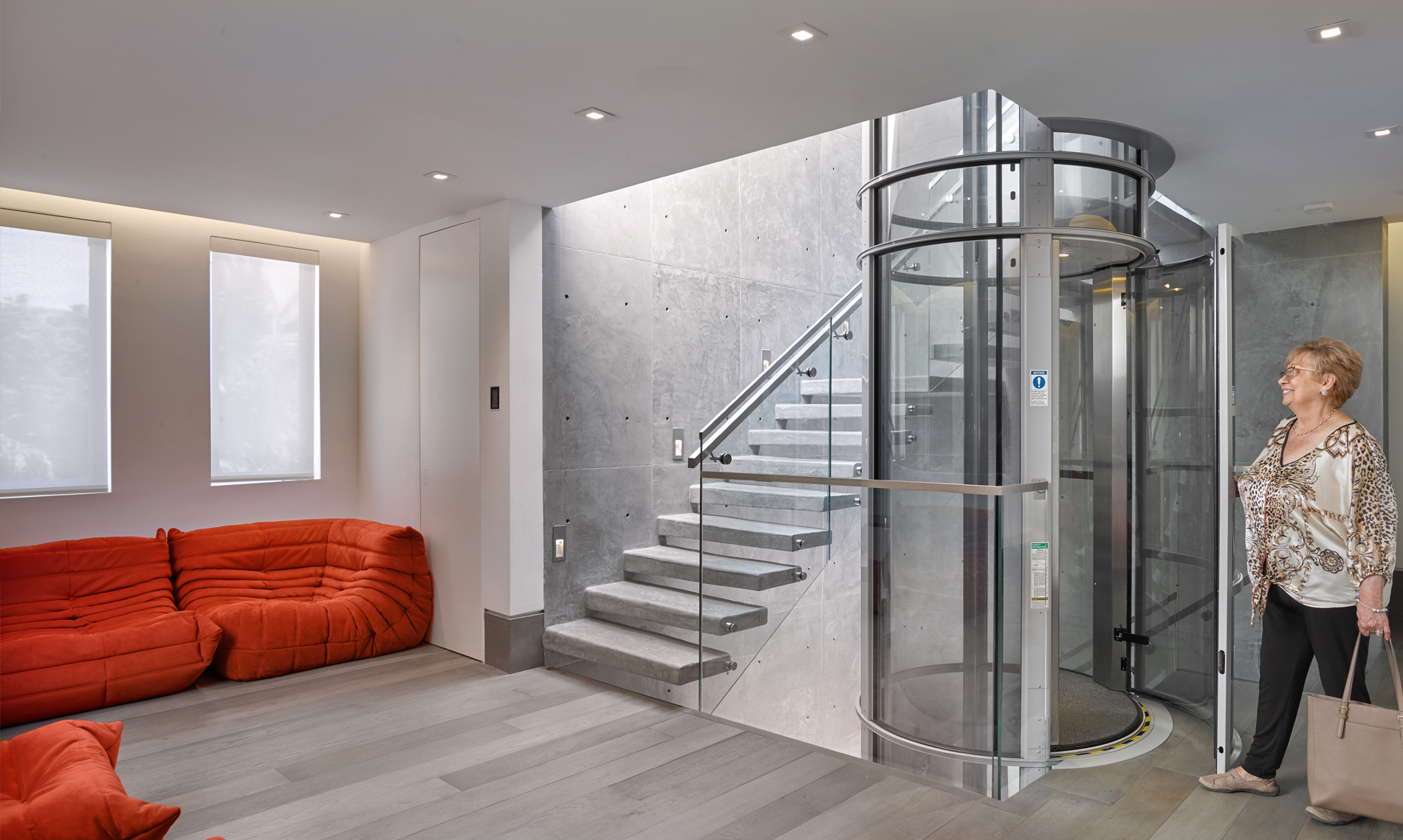Are you considering a residential elevator to boost accessibility and prepare for aging in place? You have more options now than ever! Before thinking about it, consider the space available for installation. In the U.S. over 2.8 million households incorporate elevators, as it’s a growing trend that makes homes safer and more convenient.
Whether it’s a sleek pneumatic tube or a classic hydraulic lift, it’s essential to know about your space. You must work closely with your local residential elevator company to find the perfect fit. Hence, it enhances your home’s value and ensures comfort and independence for years.
If you’re ready to elevate your living space, start planning today and join the 89% of homeowners who report increased satisfaction after installation. Make your home future-proof and fabulous with a custom residential elevator!
In this blog, you’ll learn what residential elevator space requirements are for a home structure elevator fit.
What residential elevator space requirements do you need for a perfect installation?
It is vital to understand residential elevator space requirements for a perfect installation. An entire elevator system installation requires room for the following:
- The elevator shaft
- The elevator cab
- Easy entry-exit pathways
- Possible machine room or mechanical control system
Typically, a residential elevator fits into a two-to-six-story home. The American Society of Mechanical Engineers (ASME) limits the travel height to 50 feet. Generally, you’ll need at least 5’ x 5’ of floor space, but even with less room, an experienced elevator company can find a solution.
If you have more space, design options can expand according to your space. For instance, sliding landing doors, though larger than traditional swing doors, add a touch of elegance.
An ADA-compliant elevator should adhere to the following dimensions. The elevator door width should be at least 36”. In addition, Arrow Lift’s standard interior cab is 15 square feet, with common dimensions like 40” x 54” or 36” x 60”. Local codes usually mandate doorways to be at least 32 inches wide.
Some residential companies offer a smaller 12-square-foot cab. However, this can’t accommodate multiple users or a wheelchair with a companion. For wheelchairs or multiple users, a 15-square-foot cab is used. It can handle up to 950 pounds. Furthermore, these companies will charge more if you want a 15-square-foot elevator.
Installation Depends on the Type of Home Elevator Space Requirements
Accessible elevator installation greatly depends on the type of home elevator you choose. The three most common types of home elevators include:
Hydraulic Elevators:
Hydraulic elevators use a fluid-driven piston to operate. Their standard sizes range from 12 to 15 square feet and require a minimum of 5’ x 5’ space.
Cable Elevators:
Cable elevators use electricity and a pulley system. They are less common in newer constructions but share space requirements similar to hydraulic elevators. Their standard sizes range from 12 to 15 square feet. For installation, you will need at least a 5-square-foot area blocked off.
Both hydraulic and cable elevators are considered traditional elevators. They are concealed in a wall and have a retractable door for entry.
Pneumatic Vacuum Elevators:
The latest pneumatic vacuum elevators are more affordable as they don’t require extensive demolition. They consist of glass or acrylic tubes, commonly around 30 inches in diameter (2.5 feet). They are installed in the open, usually next to an existing staircase. To accommodate a wheelchair user, they require approximately 3’ x 4’ (12 square feet).
Shaftless Elevators:
Shaftless elevators consist of a rectangular car traveling between floors on a track. These residential elevators are usually more affordable but less attractive than other options. A larger model is designed to accommodate a wheelchair or two people, which usually requires 14 square feet of space. (approximately 3.5’ x 4’)
Many residential building codes require 18 square feet or less of home elevators. This is enough for an elevator 3 feet wide and 6 feet deep, more extensive than typically needed unless the home is huge.
For the best fit, consult a residential elevator company early in your planning to determine what’s possible in your space.
The best Home Elevator Placement For Installation
The best place to install a residential elevator depends on your preferences, space, needs, and location. The location often works best with the home’s natural flow and existing structure and provides great functional benefits.
The Staircase:
In general, a staircase is already situated in a prime location of the house. In addition, it provides access to all floors. Thus, a common choice for installing accessible elevator is adjacent to the staircase.
During your home’s construction, your architect will carefully consider the location of your staircase according to home design. As a result, the staircase or adjacent space is often an equally convenient location for an elevator. Furthermore, this architectural layout can minimize space usage and add a luxurious edge to your home.
Style Guide:
If you have a spiral staircase, you must convert it into an elevator shaft. This way, it looks great, and you can easily use unused space.
The Garage:
The garage is a practical and convenient location for a residential elevator. It facilitates easy movement to and from your home and is accessible for transporting heavy items to and from your car. However, it’s essential to consider whether the space above your garage is suitable for lift access.
Style Guide:
Garages often have a different aesthetic from the rest of the house. Thus, it is challenging to choose an elevator design that complements both spaces. Choose neutral colors such as black, white, grey, and silver to provide a versatile solution that blends well with various styles.
Materials Guide:
As you know, garages are uninsulated and more exposed to harsh weather conditions than other parts of the house. For outdoor areas like garages, select designs that use durable materials like stainless steel and stone, which are resistant to fading and rusting. Avoid elevators with wood detailing because they may not withstand these conditions.
Frequently Used Rooms:
Residential elevator installation near or inside the rooms you use most can significantly enhance your comfort and independence within the home. These locations include kitchen-dining areas, living rooms, and bedrooms.
This setup helps reduce the strain of everyday movements around the house and allows those with limited mobility to move freely without any hassle.
Style Guide:
If your elevator is indoors, choose a bold color to complement your interior design. However, for smaller rooms, elevators with neutral colors are better suited to the surroundings. Hence, they prevent the space from feeling crowded.
Materials Guide:
For indoor elevators, you can choose stylish detailing like wood paneling or brightly colored paint without worrying about natural elements causing fading or damage.
How Residential Elevator Space Requirements differ for New builds and Retrofits
If you install an elevator in a new home being built, you will have much more freedom to place your lift. But in the case of retrofitting a lift into an existing building, first, you need to consider the space required for an elevator shaft. Further, consider the structural support needed to ensure the lift is safe and fully operational.
New Homes:
If you consider your elevator location early in the design process, you can enjoy great flexibility. In new homes, you can place your lift pretty much anywhere you’d like. In addition, your elevator installation contractor can work with your home designers to create the perfect home layout for optimal lift functionality and reach.
Retrofitting:
Residential elevator installation into an existing home may be more limiting. Firstly, you must consider the space available. Furthermore, you’ll also need to check that your chosen location can provide enough structural support to ensure everything is safe and operational.
In these situations, you’ll benefit from choosing an industry professional. They can guide you through the process. Additionally, they help you choose the best location for functionality, practicality, and aesthetic design.
Final Thought:
A residential elevator installation significantly enhances accessibility, comfort, and home value. Further, it makes it a popular choice among homeowners. Due to this, its demand increases, with over 2.8 million households already equipped and 89% of owners reporting increased satisfaction. The residential elevator space requirements vary by elevator type, with most needing a minimum of 5′ x 5′ and adherence to ADA standards.
Home elevator placement, whether near staircases, garages, or frequently used rooms, can integrate perfectly into your home’s design. New builds offer greater flexibility, as compared to retrofits that require careful planning and professional guidance.
If you want to understand these residential elevator space requirements and plan accordingly, you can future-proof your home, Contact us. We’ll ensure your safety, independence, and a touch of elegance for years.







